|
courses :: mas 834
|
| |
|
tangible interfaces :: hiroshi ishii
|
| |
|
this course will explore the design issues of "tangible interface," a new form of human-computer interactions (hci) which focuses on the physicality of media. tangible interfaces will make bits accessible through everyday physical surfaces (e.g. walls, desktops, ceilings, doors, windows), everyday objects (e.g. cards, books, models, instruments) and ambient media such as light, sound, airflow and water flow in a physical environment. |
|
|
| |
|
assignments ::
|
| |
|
assignment one :: tangible temperature controlled interface for artistic expression
|
|
aisling kelliher + gian pangaro
|
| |
|
this proposed application would use touch to warm up, and absense of touch to cool, a projected display. potential scenarios include use in a building foyer, a public space and a train station. some of the inspiration for this project was derived from the work of karl gerstner and other kalte kunst artists ::
|
| |
  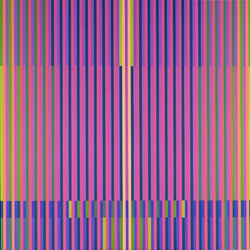
|
| |
|
the control mechanism for the application :: a white ceramic square placed over the peltier junctions which heat up and cool down as the capacitive sensors detect human touch. this mechanism controls the form of the projected image. in this scenario we created a visualization of numbers of people getting on and off along a train line.
|
| |

|
| |
|
assignment two :: levitable: electromagnetic topographical display
|
|
aisling kelliher + gian pangaro
|
| |
|
for this assignment gian and i constructed what we called the levitable, an electro-magnetic controlled topographical display device. the electromagnets control the movement and displacement of an array of vertical rods, where the height of these rods then represent individual points of elevation in a landscape. the inspiration for this design came from the mysterious and beautiful rock formations called the giant's causeway, in northern ireland ::
|
| |
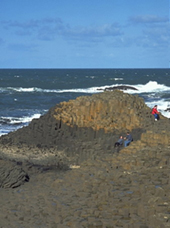 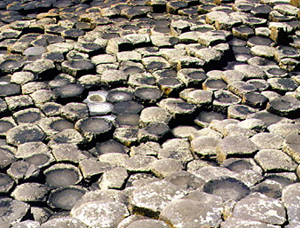 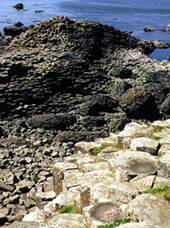 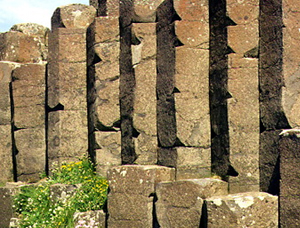
|
| |
|
the levitable device is designed as a system for computer-controlled actuation of a topographic surface. it aims to allow users to quickly create models of existing real-world topographies from numeric data collected in the field. it also allows users to make topographic changes without painstakingly adjusting physical models by hand. the actuation platform itself consists of a 6.5" square grid of 64 electromagnets. custom electronics drive these magnets bidirectionally, making it possible to set the polarity and strength of each magnet's field, as well as turn individual magnets off entirely.
|
| |
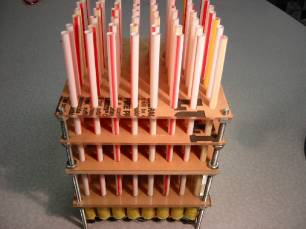 
|
| |
|
we use the array of electromagnets to create attractive or repulsive magnetic fields that vertically move an array of magnetic rods. a layered acrylic grid-like structure built above the electromagnets holds an 8 x 8 grid of vertically oriented 8" long plastic tubes (drinking straws), each with a small but powerful neodymium magnet attached to one end. switching the polarity of the underlying electromagnets allows the system to levitate individual rods 1-1.5" above the top of the electromagnets. levitable represents a first prototype for an electromagnet topographical display. the current working model is relatively minimal in scope, in that the rods can be individually displaced and subsequently returned to their original position, but positioning the rods according to actual topographical data input has not yet been implemented.
|
|
gian is continuing research on some of the aspects of this project. go gian! |
| |
|
course website |
| |
 |